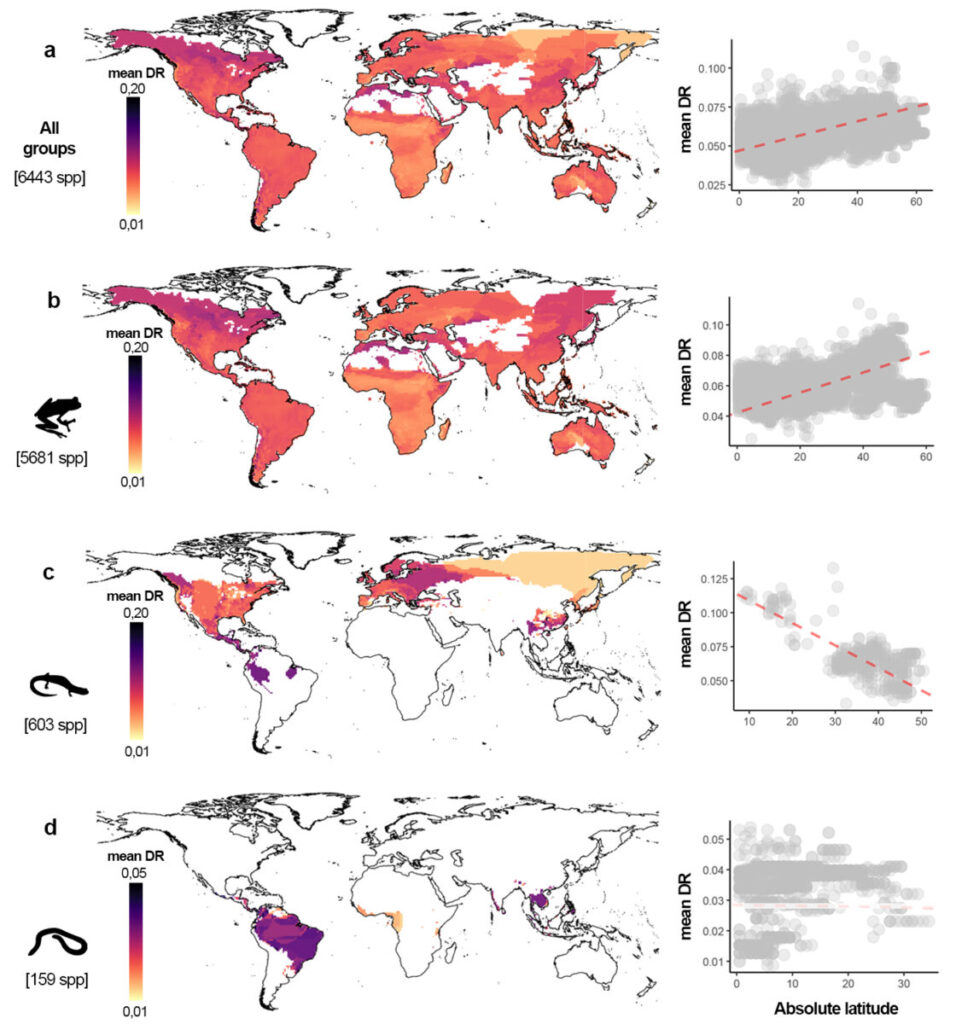A study led by Adrián García-Rodríguez and involving colleagues from Mexico, Colombia, Austria and Brazil was recently published in Communications Biology. The research integrates information on geographic distributions and phylogenetic relationships of roughly 7000 amphibian species and couples macroevolutionary and macroecological approaches to describe the variation in the rates at which amphibian species have arisen around the globe. The findings support a similar, yet counterintuitive, pattern found in other taxonomic groups like plants, fishes, birds and mammals: mean grid-cell speciation rates are not necessarily higher in the Tropics.
This is unexpected if one considers that contemporary tropical species richness is several orders or magnitude higher than species richness in other regions of the globe. The study goes a step further and deconstructs this pattern by taxonomic Order, finding that the major trend is driven by anurans (i.e. frogs and toads), the group that accounts for the highest proportion of the global amphibian diversity. Nevertheless, salamanders follow an opposite pattern with higher speciation rates in Tropical clades, but caecilians did not show any clear latitudinal trend. The authors delve into potential explanations for the overall amphibian speciation trends by testing -at the bioregion level- several hypotheses that have been proposed to explain the latitudinal gradients of diversity. This includes analyses of drivers such as historical climatic stability, productivity, biotic interactions, area, evolutionary time and landscape complexity.
You can read the full article and check out the interesting results here!

Reference: García-Rodríguez, A., Villalobos, F., Velasco, J.A. et al. The latitudinal variation in amphibian speciation rates revisited. Commun Biol 8, 822 (2025). https://doi.org/10.1038/s42003-025-08225-2

